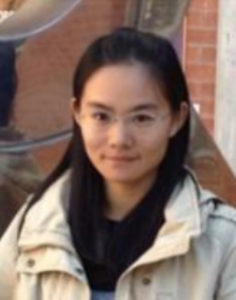Presented By: Department of Astronomy
Department of Astronomy 2023-2024 Colloquium Series Presents:
Dr. Jinyi Yang, Assistant Research Professor, The University of Arizona

"Probing the Early Universe using the Most Distant Quasars"
Quasars at z~7 hosting highly accreting black holes are unique probes for the early Universe, including the growth of the earliest supermassive black holes (SMBHs), the assembly of their massive host galaxies, and cosmic reionization. I have been leading a distant quasar survey, which yielded the largest sample of luminous quasars at z~6.5-7.6. Pre-JWST, studies using this sample have placed stringent constraints on the intergalactic medium (IGM) evolution and early SMBH growth. The launch of JWST opens up a new era. I will introduce my recent effort to conduct high-resolution observations of a sample of ~30 luminous reionization-era quasars using JWST and ALMA, in synergy with observations in other wavelengths. This dataset allows us to delve into a comprehensive study of the interactions between early SMBHs and their host galaxies at multiple scales and phases, and enables new methods to constrain the reionization physics. I will present early results, covering quasar physics, AGN feedback, host galaxy stellar emission and gas kinematics, and IGM evolution. These new discoveries mark the beginning of a new era towards understanding the early Universe. With the upcoming next-generation facilities (e.g., Rubin, Euclid, Roman, and E-ELT), our understanding of these key questions will be revolutionized in the next decade.
Quasars at z~7 hosting highly accreting black holes are unique probes for the early Universe, including the growth of the earliest supermassive black holes (SMBHs), the assembly of their massive host galaxies, and cosmic reionization. I have been leading a distant quasar survey, which yielded the largest sample of luminous quasars at z~6.5-7.6. Pre-JWST, studies using this sample have placed stringent constraints on the intergalactic medium (IGM) evolution and early SMBH growth. The launch of JWST opens up a new era. I will introduce my recent effort to conduct high-resolution observations of a sample of ~30 luminous reionization-era quasars using JWST and ALMA, in synergy with observations in other wavelengths. This dataset allows us to delve into a comprehensive study of the interactions between early SMBHs and their host galaxies at multiple scales and phases, and enables new methods to constrain the reionization physics. I will present early results, covering quasar physics, AGN feedback, host galaxy stellar emission and gas kinematics, and IGM evolution. These new discoveries mark the beginning of a new era towards understanding the early Universe. With the upcoming next-generation facilities (e.g., Rubin, Euclid, Roman, and E-ELT), our understanding of these key questions will be revolutionized in the next decade.